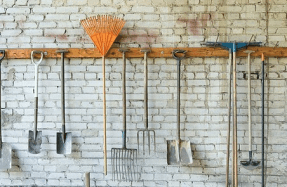AN AXE ON THE UPSWING

Anyone can whip out their credit card and buy a new axe, but “certified” axe junkies face uncontrollable excitement when they spot a dark corner at the flea market filled with rusty, broken-handled axes. This, my friends, is the intersection of opportunity and euphoria. Once you’ve made the deal or have struck rusty gold digging at an old barn site, it’s time to start the restoration. Since the axe you start with is likely to be covered with a thick coat of rust, treat it as if you’re an archeologist, peeling back the layers of oxidation without damaging the steel (including any etchings) below. In a matter of hours, most axes can be transformed back into a work axe that’s ready for another century of use—or simply a mantel piece to be admired.
Finding Vintage Axes to Restore
Seeking out old axes and restoring them is well worth your time. It’s estimated that from 1850 to 1950, more than 10 million felling axes were produced by hundreds of different axe
You’re reading a preview, subscribe to read more.
Start your free 30 days





